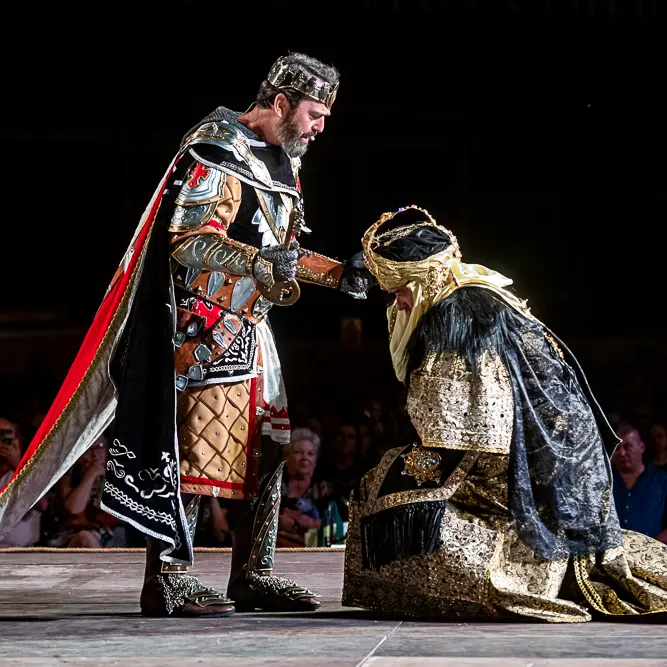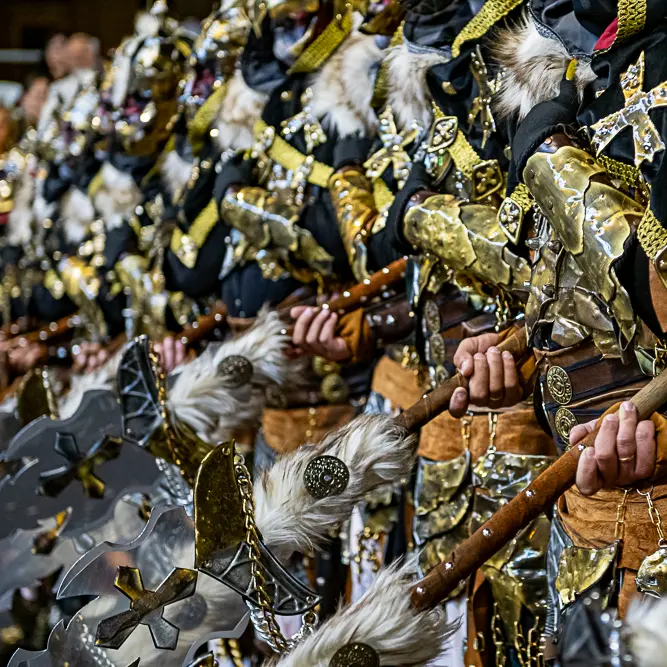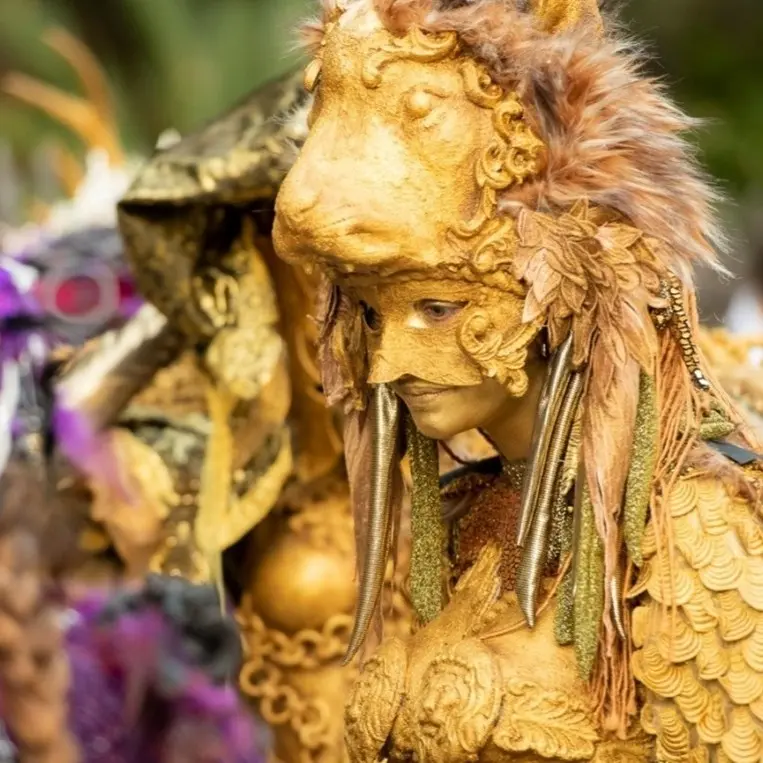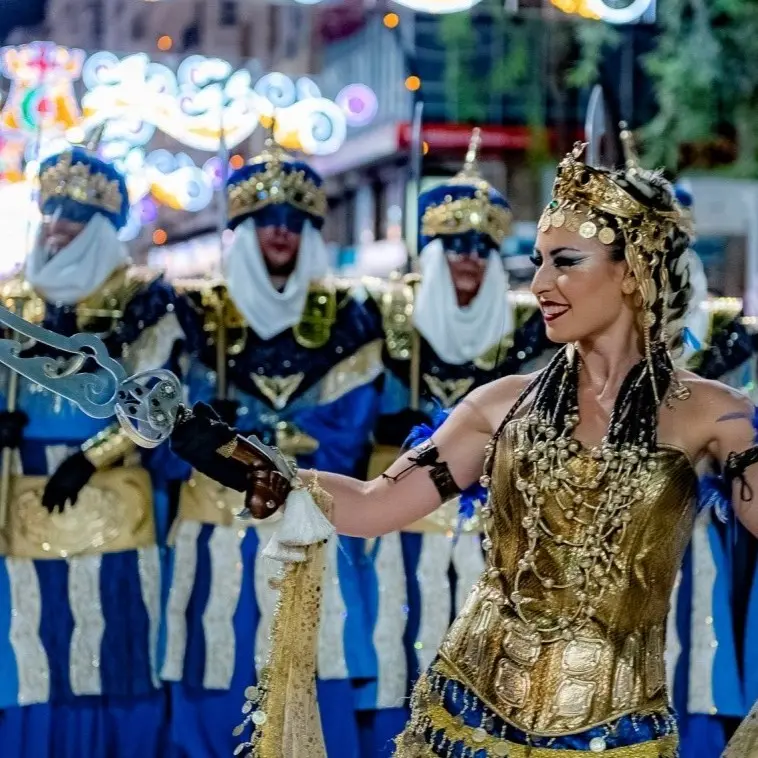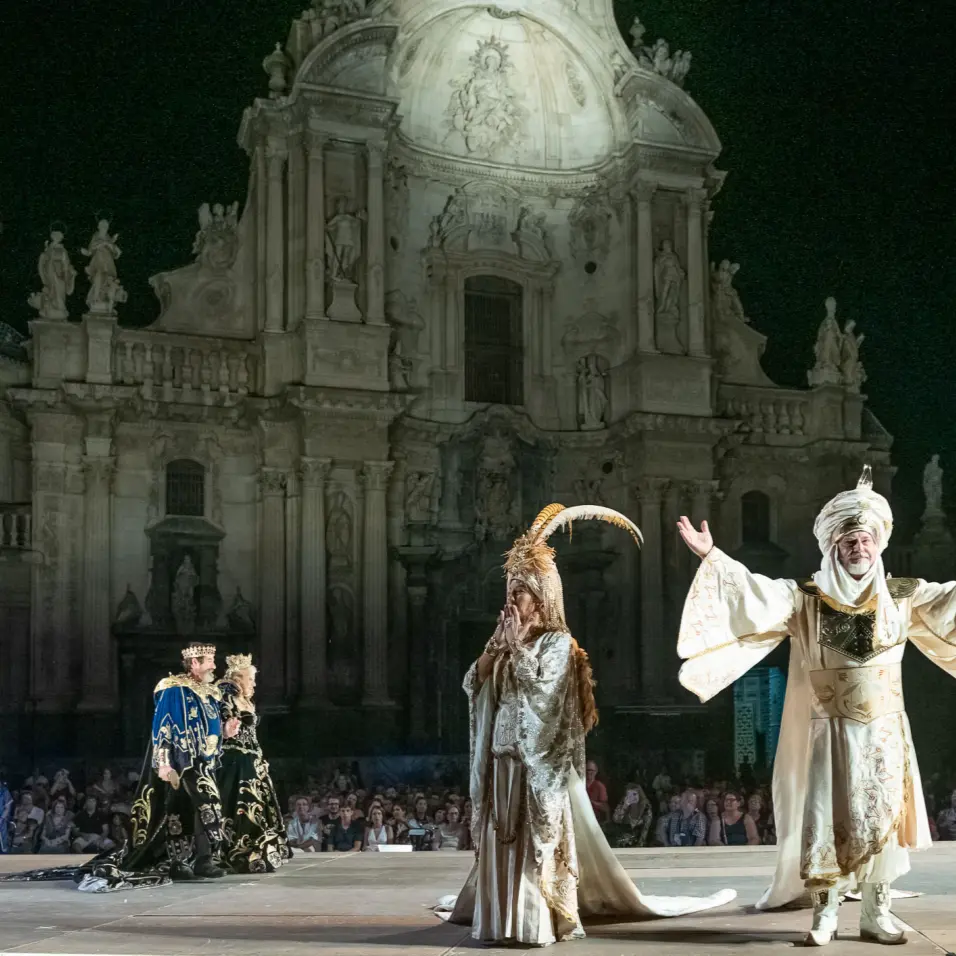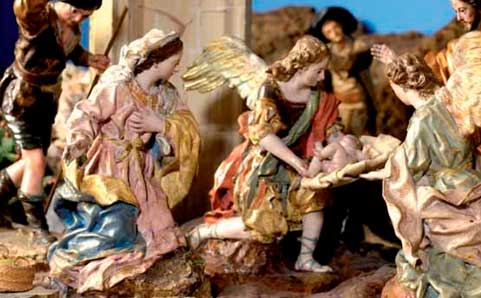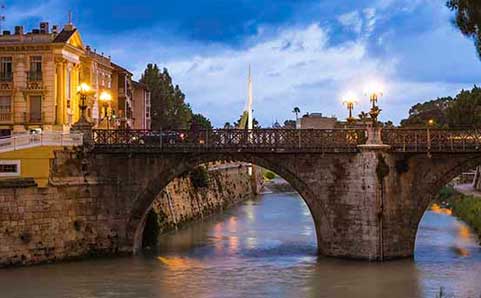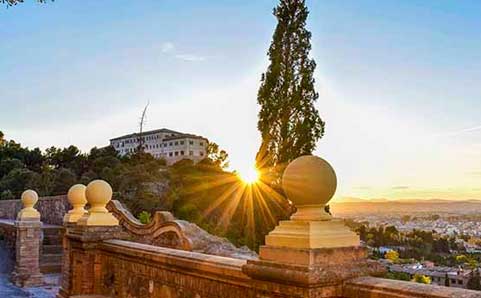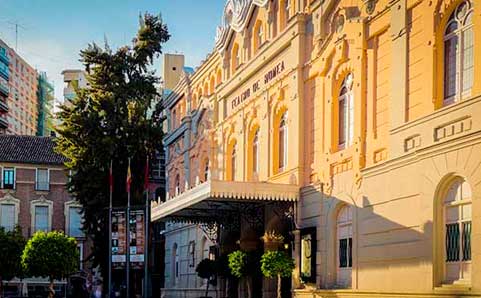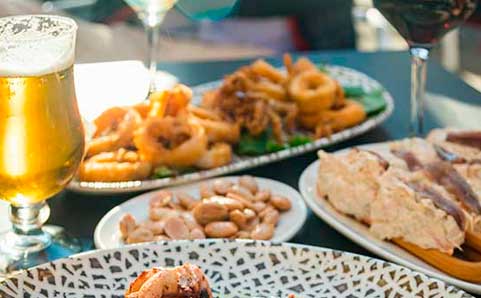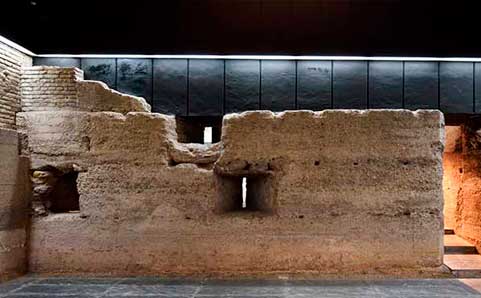The Moors and Christians of Murcia
Celebrating 1200 years of the City: Through History, Tradition, and Colour.
The Festival of Moors and Christians in the city of Murcia is undoubtedly one of the most vibrant, unique, and deeply-rooted celebrations in the region. Every year, mid-September, thousands of locals as well as visitors come together to passionately remember Murcia’s medieval past and the peaceful coexistence between Muslims and Christians. This coexistence, despite having its origins in conquest, symbolizes a historical cultural melting-pot and the deep roots of the city. The festival gains even more importance this year 2025, coinciding with the 1200th anniversary of the founding of Murcia.
This festival serves not only as a tribute to Murcia’s medieval past, but also as a vibrant celebration of tradition, colour, and music, shaped through centuries gaining influences, both local and by the interplay of the Reconquista's echoes and local Murcian influences. We will delve into the festival's origins, and examine its parades, costumes, and music, as well as the unique atmosphere that is experienced in the city every year. Furthermore, we will contextualize the historical significance of the founding of Murcia, at the time called Mursiya, of which the 1200th anniversary will be commemorated this year, 2025.
The Origin of the Festival: A Journey into the History of Murcia
The Moors and Christians festival, as it exists today, has its roots in the Middle Ages, a period characterized by the conflicts between Christian and Moorish kingdoms during the lengthy “Reconquista”, the reconquest of al-Andalus. This struggle for reclaiming territories under Muslim control concluded in 1492 with the fall of Granada, the last Moorish stronghold on the Iberian Peninsula. And even though the city of Murcia came under the rule of Fernando III in 1243, the region's history has been significantly shaped by the centuries of coexistence of Muslims, Jews, and Christians.
Murcia, being under Islamic rule from the eighth century until the Reconquista, has a profound connection to the Islamic world and culture, as is the historical legacy that shapes traditions, architecture, and scientific advancements, which can be seen in monuments, streets, and customs.
While the precise origins of the Moors and Christians festival in Murcia is difficult to trace back, these celebrations became more structured and organised in the nineteenth century, even though similar festivities had been observed in the region prior to that. As so, during the nineteenth century, amidst a resurgence of local and regional identity influenced by Romanticism, the Moors and Christians festivities began to evolve into the vibrant celebrations we know today, featuring parades, battle re-enactments, music, and extensive community involvement.
The festivity commemorates the founding of Murcia, which took place in the year 825 when the Cordovan emir Abderramán II founded the city on the site of an ancient Iberian settlement.
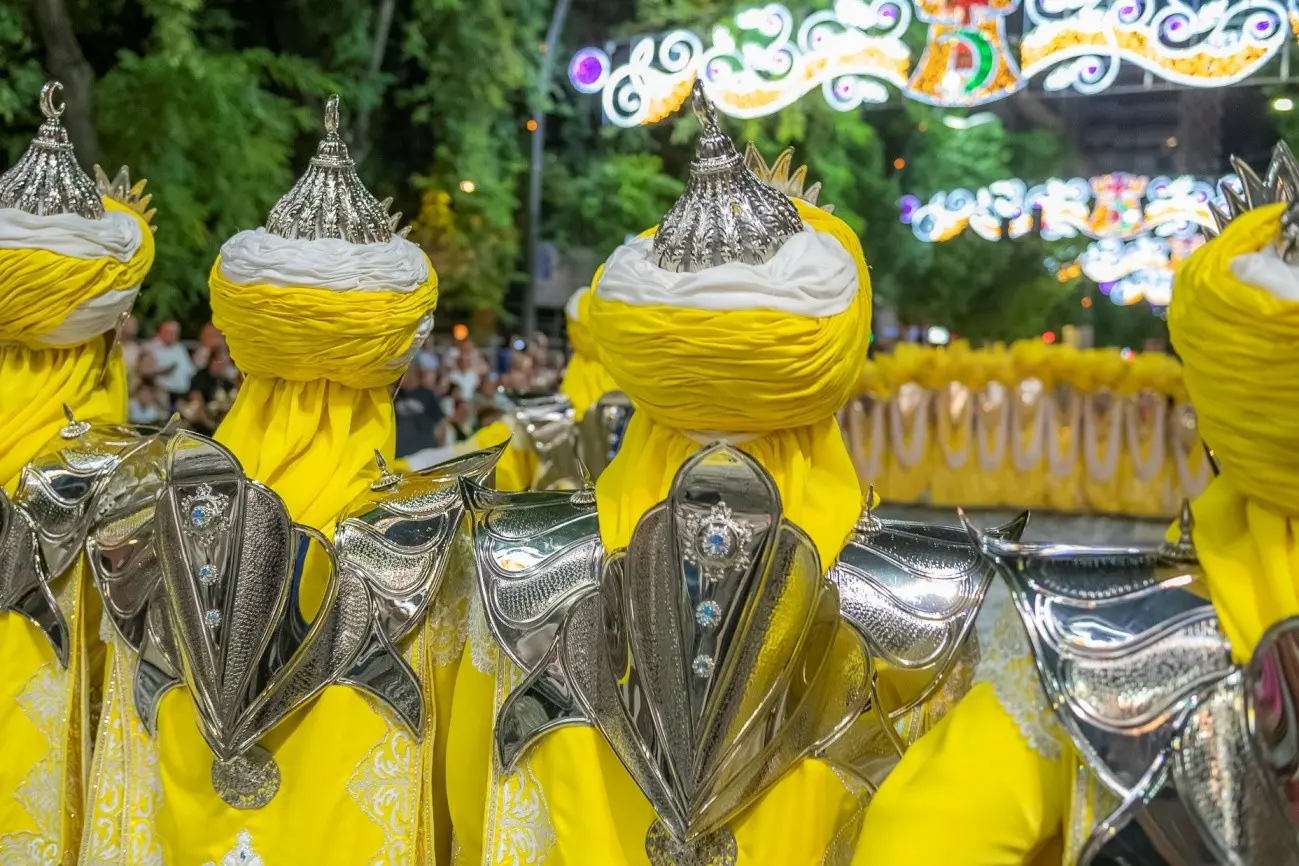
The festivity also commemorates the surrender of the keys to the city, from King Ibn-Hud to Infante Alfonso of Castille, Fernando III’s son. The symbolic act of handing over the keys to the city took place on June 19, 1243, when Infante Alfonso, in command of the Christian troops, received the keys of the city as a sign of submission and surrender. This event represented joining Murcia as part of the Kingdom of Castille after centuries of Muslim rule, and marked the next step in the expansion of the Christian kingdoms to the south during the Reconquista.
The surrender of Murcia in 1243 was not a violent conquest but an agreed political transaction, which allowed the city to avoid significant destruction. Many of its Muslim inhabitants were able to remain in the city under the new Christian rule, albeit with a special status that allowed them to retain some of their rights and customs.
The city will celebrate the 1200th anniversary of its founding in 2025, and the Moors and Christians festival will become one of the best ways to commemorate this event, as it connects medieval history with the present, and the Murcian identity.
The Parades: A Display of Colour and Tradition
The Parades are undoubtedly the highlight of the Moors and Christians Festival in Murcia. These parades take place over several days, with a special emphasis on the last Saturday of the festivities. Where hundreds of Murcians, dressed in the most elaborate costumes, walk through the main streets of the city, from the El Carmen neighborhood to Fuensanta square, where the "great parade" takes place. The Moorish “kabilas” and the Christian “mesnadas” (groups of armed warriors) parade before thousands of spectators who gather along the Old Bridge and the Gran Vía to enjoy the spectacle of colour, music, and grandeur.
The parade embodies a vibrant recreation of the splendour of two historical factions: the Moors, descendants of the Muslims who once inhabited the peninsula, and the Christians, heirs of the kingdoms that battled for the Reconquista. The Moorish “kabilas” are typically striking, adorned in costumes that evoke the opulence of caliphs and sultans, while the Christian “mesnadas” draw inspiration from medieval knights, featuring armour, swords, lances, capes, and banners that symbolize the fight for the Christian faith.
The fashion shows are, in themselves, a work of art in motion. The troupes advance, accompanied by bands that play marches and “pasodobles”, while the participants showcase the mastery of their costumes, shields, spears, and swords, imitating the old military confrontations. In some performances, battles between the two sides are recreated, using fireworks and special effects that simulate the arquebus shots and explosions of medieval times.
The costumes: Art and Symbolism
Costumes are a cornerstone of the Moors and Christians Festival in Murcia. Participants invest months in creating their outfits, which serve not only a decorative purpose but also represent the values and historical traditions of each side. The costumes of the Moors are typically more exotic and luxurious, featuring shiny fabrics, gold and silver embroidery, and ornamental headdresses that evoke the opulence of the Muslim caliphs. Long tunics, turbans, and veils are characteristic elements of Moorish attire, along with ornaments such as feathers and jewels that add a touch of magnificence.
On the other hand, Christian costumes are inspired by medieval armour, with helmets, shields, capes, and swords, which evoke the struggle of Christian knights during the Crusades and the Reconquista. The simplicity and sturdiness of the armour contrast with the ornamentation of the Moors, but both groups share a similar sense of pride and exaltation of their history.
Each group, in addition, has its own style and theme. Some are based on specific historical moments, such as the capture of the city of Murcia in 1243, while others prefer to focus on representing the culture and customs of medieval people. The costumes, in this sense, function as a way to tell stories, connect participants with their roots, and pay homage to local traditions.
Music: The Heartbeat of the Festivities
Music is a vital component, it’s the lifeblood of the Moors and Christians Festival. Local and regional bands play a crucial role in energizing the parades, creating an epic and festive atmosphere throughout the celebration. The festival's music primarily features marches and “pasodobles”, which evoke the themes of struggle, victory, and honour associated with medieval knights.
Moorish marches are especially solemn and dramatic, featuring a slow, deep cadence that highlights the majesty of Moorish culture. Christian marches, on the other hand, are usually faster and more joyful, reflecting the impetus and determination of Christian knights. Both types of marches are performed throughout the parade, alternating according to the side that takes centre stage in each scene.
The atmosphere: A Journey to the Past and a Celebration of the Present
The Moors and Christians Festival in Murcia is not merely a cultural event, it is a vibrant celebration of the Murcian community. During the days of the festival, the city undergoes a magical transformation. The streets overflow with flags, banners, lights, and the excited energy of the crowds, creating a festive atmosphere that unites Murcians with tourists drawn in by the magnitude of the celebration. A medieval camp is set up to accommodate all the festive groups and invites visitors, local or not, to participate and share experiences with the "festeros", the people participating actively in the festivities. The city's squares and streets come alive, with locals sharing food, drink, and joy, while troupes gather to rehearse and finalize the details of the parades.
The Moors and Christians Festival in the city of Murcia is a truly unique event, a vibrant tapestry of history, tradition, and emotion. Through its parades, costumes, music, and festive atmosphere, the city pays homage to its medieval past and celebrates its identity as a meeting place between cultures.
In the context of the 1200th anniversary of the founding of Murcia, the festival is of even greater significance. This historical milestone not only underscores the city's antiquity but also emphasizes the continuity of its traditions, it0s resilience, adaptability, and community spirit. The Moors and Christians Festival, coinciding with this 1200th anniversary, serves as a vehicle for conveying local history and culture, celebrating not only the past but also the present and future of Murcia.
